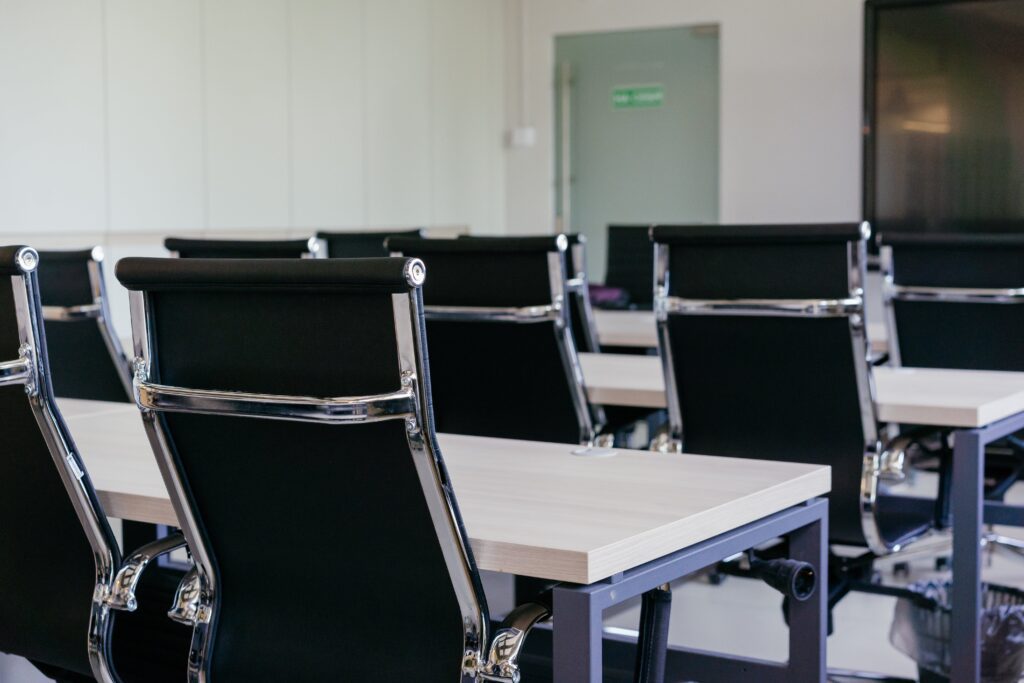Imagine the thrill and excitement of solving puzzles, deciphering clues, and racing against the clock to escape a locked room. It’s an experience that has captivated people all around the world. But did you know that you can actually create your very own escape room? Yes, you read that right! With a little bit of creativity, planning, and a dash of mystery, you can transform any space into a captivating escape room adventure that will leave your friends and family in awe. So, gather your imagination and get ready to embark on a thrilling journey of designing and constructing your very own escape room experience.
Choosing a Theme
Selecting a Theme
Choosing the right theme for your escape room is crucial to create an engaging and immersive experience for your participants. Start by brainstorming ideas and considering what themes would resonate with your target audience. Whether it’s a spooky haunted house, a thrilling spy mission, or a mysterious treasure hunt, the possibilities are endless. Make sure to select a theme that aligns with your interests and expertise to ensure you can create a compelling experience.
Brainstorming Ideas
Once you have decided on the general theme, it’s time to brainstorm specific ideas for your escape room. Get creative and think outside the box! Consider elements such as unique puzzles, intriguing storylines, and captivating visuals that will enhance your participants’ experience. Brainstorming with a team of friends or volunteers can generate a wide range of ideas and help you select the best ones to incorporate into your escape room.
Considering Resources
When designing your theme, it’s important to consider the resources you have available. Take into account factors such as budget, time, and materials. Determine what props, decorations, and technology you will need to bring your theme to life. Additionally, consider the space you have available and how it can be transformed to fit your chosen theme. By carefully considering your available resources, you can ensure that your escape room is both feasible and enjoyable.
Creating a Compelling Story
A captivating story can greatly enhance the overall experience of your escape room. Develop a compelling narrative that ties into the chosen theme and engages participants from the moment they enter. Consider incorporating elements of mystery, suspense, and excitement to keep participants hooked. A well-crafted story will not only provide context for the puzzles and challenges but also create a sense of immersion that will transport participants into the world you have created.
Designing Puzzles
Determining Puzzle Types
When designing puzzles for your escape room, it’s important to consider a variety of puzzle types to keep participants engaged and challenged. This could include logic puzzles, riddles, word games, physical challenges, or even technology-based puzzles. Tailor the puzzles to fit the theme and storyline of your escape room, ensuring they are both relevant and enjoyable for participants of all skill levels.
Creating Clues
Clues are essential in guiding participants towards solving the puzzles and progressing through the escape room. Create clues that are cleverly hidden throughout the room and require participants to think critically and explore their surroundings. Clues can be presented in various forms such as written notes, audio recordings, or even visual cues. Make sure the clues are challenging enough to provide a sense of accomplishment when solved, but not so difficult that participants become frustrated.
Implementing Logic and Code
For those who enjoy solving complex puzzles, incorporating logic and code-based challenges can add an extra layer of excitement to your escape room. These puzzles may require participants to decipher patterns, solve mathematical equations, or even crack a hidden code. Integrating technology such as computers or electronic devices can further enhance these puzzles and provide a modern twist to the overall experience.
Balancing Difficulty
It’s crucial to strike a balance between challenging and achievable puzzles. Tailor the difficulty level to your target audience, considering their age, skill level, and previous escape room experience. Too easy, and participants may become bored, while puzzles that are too difficult can lead to frustration. Incorporate a mix of easy, intermediate, and challenging puzzles to cater to a wide range of participants and provide a satisfying progression throughout the game.
Testing the Puzzles
Before opening your escape room to the public, thorough testing of your puzzles is essential. Enlist the help of friends, family, or volunteers to playtest the room and provide feedback. Observe how the puzzles are being solved, note any areas that may need adjustments, and gather suggestions for improvements. Testing allows you to fine-tune the gameplay and ensure that participants have a smooth and enjoyable experience.

Creating the Physical Space
Choosing a Location
Selecting the right location for your escape room is a crucial decision that can greatly impact the success of your venture. Consider factors such as accessibility, parking availability, and target audience when choosing a location. It’s important to find a space that can accommodate the different rooms and set-ups required for your escape room’s theme. Take into account the ambiance and overall atmosphere of the location to create a truly immersive experience.
Determining the Size
The size of your escape room will depend on various factors, including the theme, number of rooms, and number of participants you plan to accommodate. Ensure that the space is large enough to comfortably fit all the required puzzles, props, and participants. Consider the flow of the game and ensure there is enough space for participants to move around and interact with the environment. Adequate space will help prevent participants from feeling cramped and enhance their overall experience.
Setting Up Different Rooms
To create a dynamic and engaging experience, consider designing your escape room with multiple rooms. Each room can present new challenges, puzzles, and clues that build upon the overall storyline. Ensure that the transition between rooms is seamless, allowing participants to progress smoothly without experiencing any confusion. The design of each room should align with the chosen theme, taking into account decorations, lighting, and props.
Decorating the Space
The ambiance of your escape room is crucial in providing an immersive experience for participants. Decorate the space according to the chosen theme, paying attention to details that enhance the overall atmosphere. Utilize props, lighting, and sound effects to create an engaging and realistic environment. Whether it’s a dimly lit and mysterious haunted house or a high-tech secret laboratory, invest in creating an ambiance that transports participants into the world of your escape room.
Installing Props and Furniture
Props and furniture play a significant role in enhancing the realism and immersion of your escape room. Identify the specific props and furniture pieces needed to bring your chosen theme to life. Consider the durability and safety of the props, ensuring they are functional and can withstand the wear and tear of multiple participants. Carefully place props and furniture throughout the room to create an interactive environment that encourages exploration and problem-solving.
Setting Up Technology
Installing Audio and Video
Incorporating audio and video elements into your escape room can add a new level of immersion and excitement. Install speakers strategically throughout the room to provide ambient sound effects or background music that complements the theme. Consider incorporating video screens or projectors to display relevant visuals or clues. Utilize technology to create a truly immersive experience that engages participants’ senses and enhances the overall atmosphere.
Implementing Electronic Locks
Electronic locks are an effective way to introduce an interactive element to your escape room. Consider using electronic locks that require codes, puzzles, or hidden clues to unlock. This not only adds an element of excitement but also allows for more flexibility in changing combinations and creating different paths within the game. Ensure that the electronic locks are reliable and user-friendly, providing a seamless experience for participants.
Setting Up Timers and Sensors
Timers and sensors are essential components of an escape room, as they help create a sense of urgency and keep track of participants’ progress. Install timers that countdown the allotted time for participants to escape, adding a thrilling element to the game. Utilize sensors to trigger certain events or reveal hidden compartments when participants solve specific puzzles. These technological elements add an interactive dimension to the escape room experience.
Designing a Control System
As the creator of the escape room, it’s important to design a control system that allows you to monitor and guide participants throughout the game. Consider using a central control room or station where you can observe participants’ progress and provide hints if needed. Create a system that allows you to control the timing of events, the unlocking of doors, and the delivery of clues. Empower yourself to deliver a seamless and rewarding experience for the participants.
Testing and Adjusting Technology
To ensure the smooth operation of your escape room, comprehensive testing of all technology components is crucial. Test the functionality of audio and video systems, electronic locks, timers, and sensors to ensure they are working accurately and reliably. Consider conducting several test runs with friends or volunteers to identify any issues or areas for improvement. Regularly evaluate and adjust the technology components to maintain the quality and integrity of the escape room experience.

Planning the Game Flow
Structuring the Game
Designing a well-structured game flow is essential to create an engaging and satisfying experience for participants. Determine the number of stages or chapters that will progress the storyline and keep participants intrigued. Plan a logical sequence of puzzles and challenges that gradually increase in difficulty. Consider incorporating a climax or final challenge that participants must overcome to successfully complete the escape room.
Establishing Clear Objectives
Clearly stating the objectives of the game at the beginning is essential in providing participants with a sense of direction and purpose. Communicate the goal or mission that participants must accomplish, such as escaping a locked room or finding a hidden treasure. Ensure that the objectives align with the chosen theme and storyline, allowing participants to feel fully immersed in the experience.
Creating a Timeline
A well-designed timeline is crucial for managing the flow of the escape room and keeping participants engaged. Divide the gameplay into specific time intervals or milestones, ensuring that participants consistently feel a sense of progress. Consider how long each puzzle or challenge should take on average and allocate sufficient time for participants to solve them. Strike a balance between providing enough time for participants to think and solve puzzles while maintaining a sense of urgency and excitement.
Designing Multiple Paths
Introducing multiple paths or alternate routes within your escape room can add complexity and replay value to the game. Consider creating puzzles or challenges that allow participants to choose between different solutions or paths. This adds an element of strategic decision-making and encourages participants to explore various options. Pay attention to balancing the difficulty and rewards associated with each path to provide a fair and satisfying gameplay experience.
Ensuring a Smooth Experience
To create an enjoyable escape room experience, it’s crucial to ensure a smooth and seamless flow throughout the game. Anticipate potential bottlenecks or areas where participants may get stuck and provide hints or assistance if necessary. Regularly observe playtests and gather feedback to identify any areas that may cause confusion or frustration. Continuously refine and adjust the game flow to create an immersive and satisfying experience for participants.
Considering Safety Measures
Assessing Potential Hazards
Safety should be a top priority when designing and operating an escape room. Conduct a thorough assessment of potential hazards or risks within the physical space. Identify any sharp objects, trip hazards, or electrical dangers and take appropriate measures to mitigate or eliminate these risks. Prioritize the safety of both participants and staff to ensure a secure and enjoyable experience.
Planning for Emergencies
While escape rooms are designed to be challenging and exciting, it’s important to plan for emergencies and unexpected situations. Develop an emergency plan that outlines evacuation procedures, emergency exits, and communication protocols. Conduct drills and train staff on emergency procedures to ensure their readiness in case of any unforeseen circumstances. Regularly review and update your emergency plan to maintain a safe environment for participants.
Creating Clear Instructions
Provide participants with clear and concise instructions at the beginning of the game to ensure their safety and understanding. Explain any rules or limitations that they must adhere to throughout the game. Include guidance on how to interact with props and furniture safely. Emphasize the importance of teamwork and cooperation to prevent any unsafe situations. Clear instructions will help create a safe and enjoyable experience for participants.
Providing Adequate Lighting
A well-lit escape room is essential for both safety and immersion. Ensure that the entire space has adequate lighting to prevent participants from tripping, bumping into objects, or causing accidental damage. Consider different lighting techniques to enhance the atmosphere and set the mood according to your chosen theme. Strike a balance between dim lighting to create suspense and brighter lighting for participants’ safety.
Addressing Accessibility Needs
To provide an inclusive experience, it’s essential to address accessibility needs within your escape room. Ensure that the physical space is wheelchair accessible and that participants with mobility limitations can navigate the room easily. Consider providing alternatives or adaptations for participants with visual or hearing impairments. Accessibility should be prioritized to ensure that all participants can fully enjoy and engage in the escape room experience.

Assembling a Team
Identifying Roles and Responsibilities
Assembling a team is crucial to successfully create and operate an escape room. Identify the various roles needed, such as puzzle designer, prop builder, game master, and marketing coordinator. Clearly define the responsibilities and expectations for each role to ensure a smooth workflow. Consider the skills and strengths of each team member to align them with the tasks they are best suited for.
Recruiting Friends or Volunteers
Recruiting friends or volunteers who share your passion for escape rooms can be a great way to build your team. Seek individuals who are creative, reliable, and eager to contribute to the project. Clearly communicate the time commitment and expectations to ensure that everyone is on the same page. Consider conducting interviews or trial periods to assess potential team members’ compatibility and commitment.
Assigning Tasks and Deadlines
To effectively manage your team, assign tasks and establish deadlines for each aspect of the escape room creation process. Clearly communicate the expectations and set realistic timelines for completion. Regularly check in with team members to ensure progress is being made and offer support or guidance when needed. Establishing a well-structured workflow will help keep the project on track and ensure efficient collaboration.
Ensuring Effective Communication
Open and effective communication is essential for a productive and cohesive team. Establish regular team meetings to discuss progress, address any challenges, and provide feedback. Encourage team members to share their ideas, concerns, and suggestions openly. Utilize communication tools such as project management software, group chat platforms, or email to maintain constant communication and transparency.
Building a Supportive Environment
Creating a supportive and positive team environment is crucial for morale and productivity. Encourage collaboration, teamwork, and a sense of shared ownership in the project. Acknowledge and appreciate team members’ efforts and provide constructive feedback when necessary. Strive to create a workspace where everyone feels valued, motivated, and supported. A strong and supportive team will contribute to the overall success of your escape room.
Promoting and Managing the Experience
Creating an Online Presence
To attract participants and generate interest in your escape room, it’s crucial to create an online presence. Develop a professional website that showcases the theme, story, and unique elements of your escape room. Utilize social media platforms to share teasers, behind-the-scenes insights, and special promotions. Engage with potential participants by responding to inquiries, reviews, and feedback in a timely and friendly manner. An online presence will help build excitement and awareness for your escape room.
Developing Marketing Strategies
Effective marketing strategies are essential to attract participants and maximize bookings. Consider various marketing channels, such as online advertisements, social media campaigns, and collaborations with local businesses or influencers. Create visually appealing promotional materials, such as flyers or posters, to distribute in your local community. Offer special discounts or incentives for group bookings or return customers. Continuously evaluate and adjust your marketing strategies based on their effectiveness.
Managing Bookings and Reservations
Efficiently managing bookings and reservations is crucial to ensure a smooth and organized operation. Implement an online booking system that allows participants to easily reserve their preferred time slots. Clearly communicate any booking policies, cancellation fees, or restrictions to avoid any misunderstandings or complications. Regularly update your availability and communicate with participants to confirm their bookings and provide any necessary information.
Collecting Feedback and Reviews
Gathering feedback and reviews from participants is essential for continuous improvement and building credibility. Implement a system that allows participants to provide feedback after completing the escape room. Encourage honest and constructive feedback by offering incentives, such as discounts or exclusive offers. Regularly review the feedback received and identify areas for improvement or potential issues that need addressing. Utilize positive reviews and testimonials to build trust and attract new customers.
Continuous Improvement
In the ever-evolving world of escape rooms, continuous improvement is key to staying competitive and providing a memorable experience. Regularly evaluate your escape room based on participant feedback, team discussions, and industry trends. Identify areas that can be enhanced or modified to improve the overall gameplay. Consider incorporating new technology, puzzles, or themes to refresh your escape room and attract repeat customers. Stay proactive in researching and implementing innovative ideas to ensure the longevity and success of your escape room.

Considering Legal and Business Aspects
Researching Local Regulations
Researching and complying with local regulations is essential when operating an escape room. Familiarize yourself with any specific laws or requirements related to safety, permits, zoning, or building codes. Ensure that your escape room meets all necessary requirements and obtain any required permits or licenses. Complying with local regulations will help you operate your business legally and avoid potential fines or legal issues.
Obtaining Permits and Licenses
Depending on your location, you may be required to obtain specific permits or licenses to operate an escape room. Contact the relevant local authorities or regulatory bodies to understand the specific requirements for your area. Apply for the necessary permits or licenses and ensure that all paperwork and documentation are submitted accurately and on time. Operating with the appropriate permits and licenses will provide peace of mind and legitimacy to your escape room business.
Setting Pricing and Payment Options
Determining the pricing structure for your escape room can be challenging but crucial to sustain your business. Consider factors such as operating costs, competition, and the perceived value of your experience when setting your prices. Research the market to ensure your pricing is competitive yet profitable. Offer various payment options to cater to different preferences, including online payments, cash, or credit cards. Create attractive package deals or group discounts to incentivize bookings.
Securing Insurance Coverage
Securing insurance coverage for your escape room is essential to protect both your business and participants. Consult with an insurance agent specializing in entertainment or event-based coverage to determine the appropriate insurance policy for your escape room. Ensure that your insurance policy includes coverage for liability, property damage, and any potential accidents or incidents that may occur within the escape room. Prioritizing insurance coverage will provide financial protection and peace of mind.
Tracking Finances and Taxes
Maintaining accurate financial records and tracking your business’s finances is crucial for sustainability. Implement a system or software to track expenses, revenue, and cash flow. Separate personal and business finances to ensure clarity and accurate reporting. Consult with an accountant or tax professional to understand the tax obligations and requirements for your escape room business. Regularly review and reconcile your financial statements to maintain financial stability and compliance.
Providing a Memorable Experience
Focusing on Immersion
Creating an immersive experience is key to providing a memorable escape room adventure. Pay attention to every detail, from the decor and props to the ambient sounds and lighting. Ensure that participants are fully immersed in the storyline and theme from the moment they enter the room. By immersing participants in a unique and engaging environment, you enhance their overall experience and leave a lasting impression.
Incorporating Surprise Elements
Surprise elements can greatly enhance the excitement and engagement of your escape room. Consider incorporating unexpected twists, hidden compartments, or secret passages to surprise and delight participants. Introduce elements that challenge their assumptions or add complexity to the gameplay. Surprise elements keep participants on their toes and create memorable moments that they will continue to talk about long after completing the escape room.
Creating Memorable Moments
Designing specific moments within your escape room that create lasting memories is a surefire way to differentiate your experience. Identify opportunities to surprise, awe, or challenge participants in unique and creative ways. Whether it’s a dramatic reveal, an impressive set piece, or a mind-bending puzzle, aim to create moments that participants will remember and share with others. Memorable moments add depth and excitement to your escape room.
Tailoring to Participants’ Experience
Acknowledging that each group of participants is unique and tailoring the experience to their needs and preferences is key to customer satisfaction. Ensure that puzzle difficulty, storytelling, and general ambiance are adaptable based on the experience level and preferences of the group. Provide options for different levels of hints or clues to accommodate groups with varying skill sets. A personalized experience will leave participants feeling heard and appreciated.
Encouraging Teamwork and Fun
The heart of an escape room experience lies in teamwork and fun. Encourage participants to work together, communicate, and collaborate throughout the game. Design puzzles and challenges that require cooperation and emphasize the importance of teamwork. Foster an atmosphere of excitement, laughter, and enjoyment throughout the experience. By ensuring participants have a fun and memorable time, you not only increase the likelihood of repeat business but also create ambassadors who will spread the word about your escape room.

